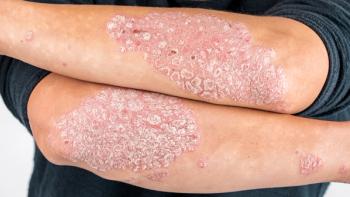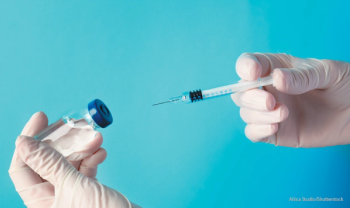
Cancer Vaccine to Prevent Breast, Ovarian Cancer Recurrence Could be Close
In partnership with the several big-name cancer centers, one company has commenced clinical trials. Find out how this cancer vaccine would work.
The current recommended treatment plan for many women after receiving chemotherapy and/or surgery for triple-negative breast cancer or ovarian cancer is to wait, says Peter Hoang, president and CEO at Jacksonville, FL-based TapImmune, which develops treatments for ovarian and breast cancers.
Waiting isn’t the approach Hoang wants to take. That’s why he’s enthusiastic about a cancer vaccine under development by TapImmune that could help prevent recurrence of such cancers in women. The treatment is described by the company as boosting the immune system to make the “helper cells in our bodies more powerful.”
In partnership with the Mayo Clinic, Memorial Sloan Kettering Cancer Center, and AstraZeneca, the company has commenced clinical trials to evaluate this cancer vaccine.
Managed Healthcare Executive (MHE) recently interviewed Hoang about the vaccine, which is in a Phase 2 clinical trial. A lightly edited version of this conversation follows.
MHE: What’s the promise of this therapy? Is the goal that it be used in a way similar to the HPV vaccine?
Hoang: I think that’s the goal with a lot of cancer vaccines, that they be used as a preventative measure. In some ways, that’s how it’s being used today. The patients who receive this therapy are in remission. What happens after a patient gets ovarian cancer therapy-that’s likely chemotherapy-generally, the patient is put into remission, which means there are very low levels of cancer in the patient. Almost all of those patients will end up relapsing. With ovarian cancer, more than half of those patients will relapse within a year.
While that patient is in remission and is stabilized, that’s when we give them the cancer vaccine. The goal is to drive the immune response to help fight relapse when it occurs and attack the tumor, thereby extending the life of the patient.
There are very clear genetic factors that leave women predisposed to ovarian cancer and triple-negative breast cancer. Obviously, we’d like to offer this treatment for women who are diagnosed with this biomarker-and before they get cancer. That would require much larger clinical trials. It would certainly be fundable once we got the drug approved for use in patients in remission.
MHE: Tell me what the patient experience will look like and what types of patients are appropriate for this treatment in clinical trials.
Hoang: After chemotherapy and/or surgery-when the patient is in remission or has stable disease-she comes into the clinic once a month for six months for the cancer vaccine. This is a relatively small injection-not unlike what you get for the flu vaccine.
The vaccine will be rotated over the course of the treatment to different quadrants of the body, much like a physician would inject a flu vaccine into a different part of the body for each subsequent injection, because the body builds up a resistance to the vaccine and because repeated injections in the same area of the body can cause redness at the injection site.
Patients would receive the vaccine under the skin, generally in the arm, buttocks, or the fleshier area of the thigh. After the initial six-month treatment, the patient may come in every two to three months for a booster shot.
It’s very simple and involves almost no side effects. We’ve administered the vaccine to about 150 patients, and the general side effects include a little bit of redness around the injection site, like you might get with the flu vaccine.
MHE: Why are some of the very serious-and very rare-side effects, such as death, associated with immunotherapy not a concern with this treatment?
Hoang: This is a fundamentally different approach. With blood cancers and the associated toxicity of CAR T therapies, which are gene-modified therapies, you’re taking T cells out of the patient and using a virus to target the cancer cells.
You’re getting that high level of toxicity when the T cells are creating an inflammatory environment once they’re inserted in the patient’s body, which can respond by having a fever. That’s the body’s reaction to a pathogen. That doesn’t happen with our treatment.
With our approach, these aren’t gene-modified T cells. Rather, we’re working with the patient’s body to develop a population of T cells to fight the recurrence of cancer.
MHE: Where is this therapy in its journey?
Hoang: TapImmune announced in November that it has enrolled the final patient in a company-sponsored randomized Phase 2 clinical study of its novel T-cell vaccine candidate, TPIV200, for treating triple-negative breast cancer. We've also announced that the first patient has been enrolled in a Phase 2 randomized, multi-center, double-blinded, placebo-controlled clinical trial of TapImmune’s novel therapeutic vaccine candidate, TPIV200. This study, which includes 280 patients, is sponsored by the Mayo Clinic, and is fully funded by the U.S. Department of Defense.
[Asked about the general availability of this treatment for patients, a company spokesperson told MHE that “[b]ecause TapImmune is a public company, any commentary on when the drug may be available could be construed as a forward-looking statement. As such, they can’t really answer your question in any capacity other than to show you their pipeline and say that they are doing everything they can to bring the drug to market.’]
MHE: Why should payers and providers pay attention to this treatment approach?
Hoang: Today, there are no approved therapies after a first remission with ovarian cancer. All those women can do is wait and those patients will relapse very, very quickly. With access to this treatment, patients will have a much better quality of life. Our treatment extends a patient’s life in a way that doesn’t affect that patient’s ability to enjoy a healthy, fruitful, productive life where the woman can go work, if that’s what the woman chooses to do.
This treatment can take place in a highly economical fashion. While we haven’t figured out the cost yet, it’s certainly less expensive to use our drug than to use something like a PARP [Poly (ADP ribose) inhibitor, which is another targeted therapy to prevent recurrence of ovarian cancer].
[According to the Institute for Clinical and Economic Review, a Boston-based nonprofit that evaluates the value of medical treatments, the monthly cost of a PARP inhibitor for recurrent BRCA-mutated disease can range from $13,679 for olaparib (Lynparza) to $13,940 for rucaparib (Rubraca).]
Newsletter
Get the latest industry news, event updates, and more from Managed healthcare Executive.



















































